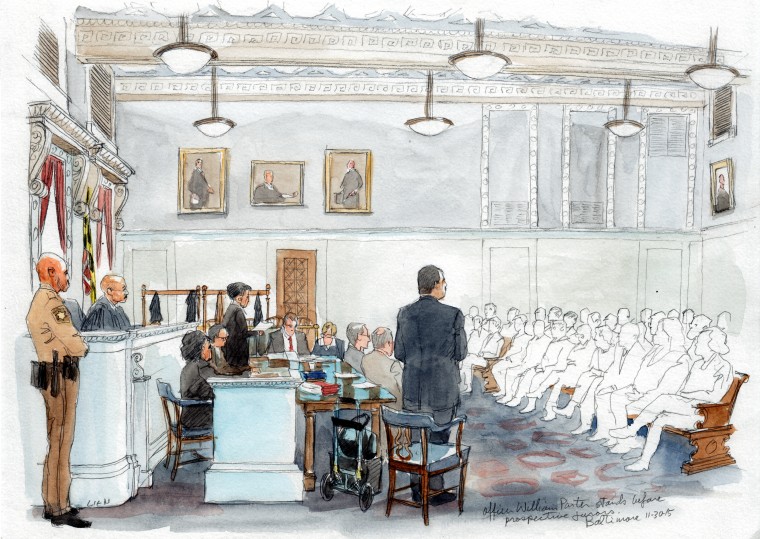A Virginia police chief who is a 35-year veteran of law enforcement testified Thursday as an expert witness in the trial of Baltimore Officer William Porter, saying his actions were "objectively reasonable" on the day Freddie Gray was injured.
Charlottesville Chief Timothy Longo was called to the stand by attorneys for Porter, who faces charges of manslaughter, assault, misconduct in office and reckless endangerment in the arrest and death of Gray.
Gray's neck was broken April 12, when he was in the back of a police transport van that made six stops over a 45-minute ride that covered just a handful of city blocks. Longo said Porter responded to Gray's request for help at the fourth stop by lifting him, handcuffed and shackled, onto the bench in the van.
Porter used his discretion and good judgment in deciding not to buckle Gray in, and he properly informed van driver Caesar Goodson, and later his supervisor, that Gray had asked to go to the hospital, Longo said.
"I believe his actions were objectively responsible given the circumstances," Longo told jurors.
"Is there anything more that Officer Porter should have done?" defense attorney Joseph Murtha said.
"No, sir," Longo said.
But on rapid-fire cross-examination by prosecutor Michael Schatzow, Longo said: "I suppose he could have gotten on the radio and called for a medic and been asked, 'What are the circumstances?'"
Porter is the first of six officers to go on trial in Gray's death. Prosecutors say Porter was criminally negligent when he ignored departmental policy requiring officers to seat belt prisoners and for failing to call a medic to the scene immediately after Gray indicated he needed aid.
Longo told jurors that all officers must use their discretion when determining how to interpret a policy or procedure, such as the Baltimore department's requirement that detainees be buckled in. Longo said general orders such as the seat belt policy "don't create a higher standard in criminal or civil proceedings. They're clearly administrative in purpose."
Longo said Goodson was ultimately responsible to make sure Gray was belted in because Gray was in his custody. Goodson faces the most serious charge of second-degree "depraved heart" murder.
Also Thursday, a neurosurgeon testified that Gray's broken neck could not have occurred the way the state autopsy report concluded.
Dr. Matthew Ammerman told jurors that Gray's "catastrophic injury" would have immediately paralyzed Gray's ability to breathe, speak and use his limbs. He said it must have occurred after Porter's primary interaction with Gray, during the van's fourth stop when Gray was able to speak, move his legs and support his own weight.
Ammerman's testimony was contrary to the state's expert witnesses, including the assistant medical examiner who conducted Gray's autopsy. She told jurors that Gray's injury occurred sometime between the van's second and fourth stops, and the injury was exacerbated throughout the van ride by Porter's failure to seek immediate medical attention.
Ammerman also testified that Gray's injuries were so severe he likely wouldn't have survived even if he received immediate medical attention.
"I don't think it was a survivable injury," he said. "With these types of spinal injuries, even with the best medical care, the outcome is usually death."
